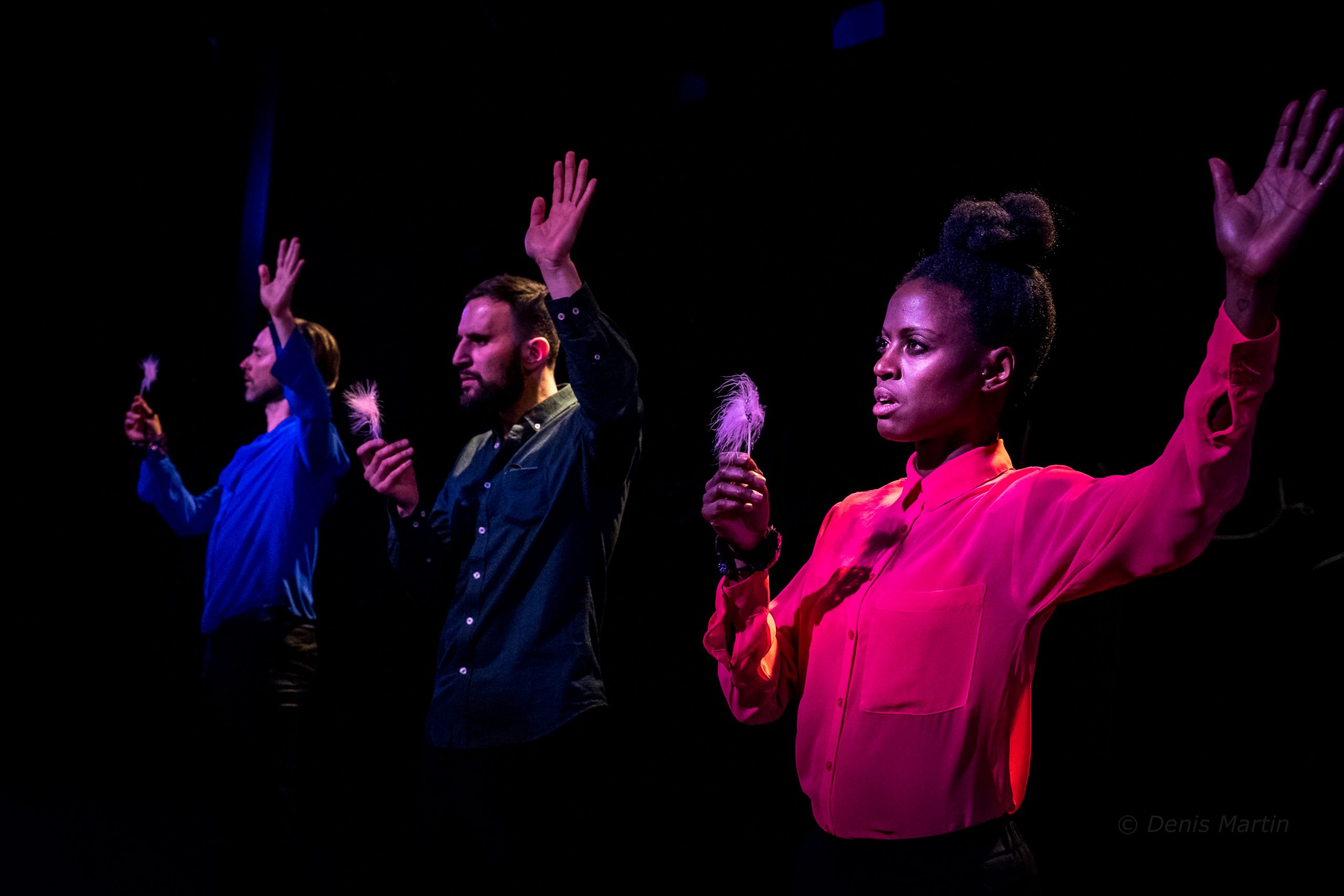Collaboration and kindness do not always go hand in hand
Two figures stood in translucent neon shirts, a third stood beside them in your average button-up, blowing pink spotted feathers. On their feet were sequined slippers, and around their wrists or in their shirt pockets hid sequined eye masks.
ONE KIND FAVOR, performed from Jan. 21-25 at Montréal, Arts Intercultural (MAI), brought together three very different artists. With a background in West African dance, Karla Etienne is Zab Maboungou / Nyata Nyata Dance Company’s administrative director. Her movements were poised, controlled and professional. Choreographer George Stamos received his Bachelor of Fine Arts in contemporary dance and performance art in Amsterdam and went on to continue his graduate studies in communications at Concordia. His background in performance comes through in his theatrical and expressive manner of movement in ONE KIND FAVOR. Lastly, moving simply and naturally is Montreal-based Omani musician, Radwan Ghazi Moumneh.
“Experience, have faith in discomfort,” said Moumneh in the Q&A following the final performance at MAI on Friday, Jan. 24. “Discomfort doesn’t always mean it’s wrong, leads to trust and surprising results.”
While Etienne and Stamos slid across the floor in their sequin slippers and blinded by their sequin masks, Moumneh sang in Arabic; some understood, some didn’t, but feelings of nostalgia and kindness were transmitted nonetheless. Behind them, on the black wall in chalked Arabic, Moumneh wrote;
رائحة الهواء بعد المطر
رائحة البحر بعد المطر
The smell of the air after the rain
The smell of the sea after the rain
This set the tone for the performance to follow.
Designing such an intimate group performance requires harmony. The collaborative process, led by Stamos, wasn’t always a kind one. It was frustrating, they had to be patient with each other and trust that it would flow smoothly.
There is an evident risk taken in moving blind, “c’était pas évident comment on passait d’un état à une autre” said Etienne, “Le bruit, on le fait, on l’entend.” Which translates to, “It was not obvious how we passed from one state to another, the noise, we make it, we listen.”
Forcing to make things fit sometimes just doesn’t work. Stamos made it his goal to remove boundaries.
“Nothing really connected without an audience, the show didn’t click, there was no one to be kind to,” said Moumneh, who was the most out of his comfort zone, claiming that he doesn’t really know how to place his body in the context of dance.
Moumneh used elements from his own work, based on excerpts from Stamos’ initial text, which was removed from the performance to balance “cohabitation.” First, based on Stamos’ personal story, he saw the need to create space for his fellow performers’ voices. Most choreographers approach dancers as blank slates, but Stamos wanted to meet them in dance without changing them. Instead, he invited Moumneh and Etienne to come as they were, heavy with their own stories, cultural background, artistic practices and languages.
“Le text, c’est ressentie. Communiqué, pas de traduction,” said Moumneh.
They recited words and acts of kindness in English, French and Arabic, and transcribed them onto the stage’s wall and floor.
Kindness among the performers lay in their commitment and their limits, what they could each take on before going into an unhealthy place. They moved erratically with each breath, marking them with a harmonica stuck between their lips as they shook their shoulders, chests, and eventually their whole bodies.
“On part avec ce qui compte pour nous, c’est une manière d’être,” (we take away what we choose, it’s a way of life”), said Etienne.
For more from these artists, visit
and Radwan Ghazi Moumneh on Youtube, Google Play or deezer.







